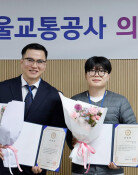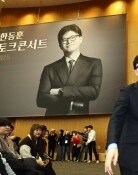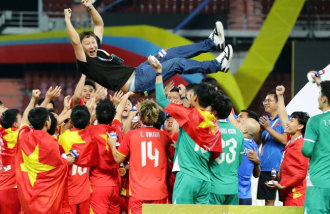Japan Declassified Diplomatic Documents in 1950-60s
Japan Declassified Diplomatic Documents in 1950-60s
Posted December. 24, 2002 22:55,
How did Japanese diplomacy unfold in the cold-war era, which started in earnest after the start of the Korean War on June 25, 1950? On Tuesday Japanese Foreign Ministry disclosed its diplomatic documents in the 1950s and 1960s, which had been classified. The contents of the documents are as follows.
Ñ Ban on contacts with Pyongyang (1955) = In October 1955, the Japanese government decided not to acknowledge any contact with the North including trade. The decision came at the strong request of South Korea, with which Japan was trying to establish diplomatic relations. At that time North Korea was actively related to Japan.
Saying if Japan "connect itself with North Korea, our enemy, we will sever Korea-Japan relations," Seoul demanded Japan break off relations with Pyongyang as a condition for the diplomatic ties between Seoul and Tokyo. Then about 30 democratic countries including the United States approved South Korea while 11 communist countries acknowledged North Korea. So, Japan decided to ban any encounter with North Korea after weighing the importance of South Korea against that of North Korea.
Ñ Reduction of the number of the deceased Chinese people (1960) = Japan confirmed that 6,800 died among 38,000 Chinese people taken forcibly to Japan during the Pacific War, but it reduced the number of the deceased to 1,893 in its announcement in April 1960.
Japan’s Foreign Ministry worried that if it had announced the number as it was, China, which took a firm attitude against the US-Japan security agreement could have called for compensations. Those taken to Japan were sent to 135 mines across the nation and some died while suffering cruel forced labor. On four occasions until July 1963, Japan added lists of the dead bringing the total to 6,401.
Ñ Review of recognition of "two Chinas" (1961) = Originally Japan acknowledged only Taiwan as a legal government. However, in March 1961 Japan considered the recognition of the People’s Republic of China in secret. Japan tried to maintain its diplomatic relations with the two Chinas, contrary to the policy of the US, which took containment policy toward China as part of anti-Communist stand. Afterwards the then Japanese Prime Minister Hayato Ikeda proposed permission of China’s entry into the UN during his visit to the US, but the then US President John F Kennedy expressed disapproval.
Ñ Nixon sounded out on revision of Japan’s Peace Constitution = In April 1967 during the Vietnam War, Richard Nixon, then as a US politician, visited Japan and sounded out the then Japanese Prime Minister Eisaku Sato on revision of its Peace Constitution, asking "Why don’t you revise the Peace Constitution in that 20 years have already passed since the end of the war?" In effect, he was suggesting that Japan do a major role for security in Asia through rearmament, which was banned under the Peace Constitution. However, Mr. Sato rejected his proposal saying, "It is not easy to revise the Constitution based on peace and democracy." Two years later, Nixon was elected US President and issued the `Nixon Doctrine` stating withdrawal of US troops stationed in Asia."
Young-Ee Lee yes202@donga.com







